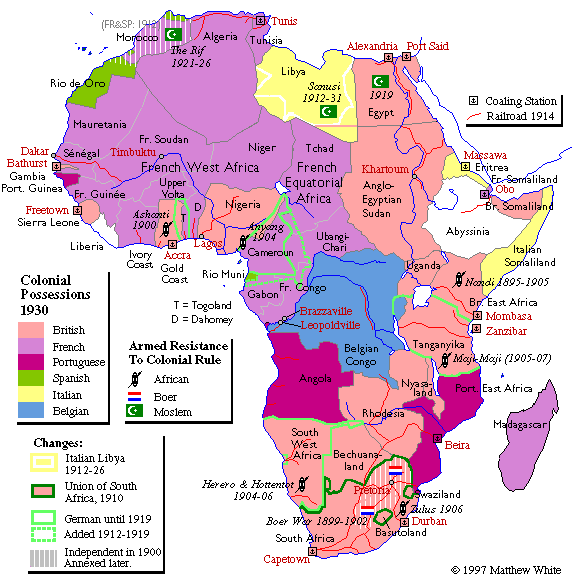
Mansa Musa of Mali - 1375
In the reality of the International Division of Labor (IDL), some countries specialize in only one or two sectors of the economy.
This is the result of the historical process which created the world system.
One Commodity Countries - many developing countries rely on one commodity for over half of their export earnings. Why?
World Empires develop: Example of Rome
The law of diminishing returns encourages expansion . . .
Colonization is carried out for economic reasons.
The IDL brought about a substantial increase in world trade and a surge in the overall size of the capitalist world economy.
Let's see how the IDL of the world system was set up using the example of European Colonization in Africa
Mansa Musa of Mali - ruled over one of the richest and most powerful countries of the 14th century.

Mansa Musa of Mali - 1375
Early Empires in West Africa - were concentrated inland around the grassland area of the Sahel. Unlike the North or East Africans, West Africans were more oriented towards the interior of the continent than to trans-oceanic trade.

Ancient Empires and Peoples of Africa

Later Empires and Peoples of Africa
(above maps were from: Maps
of Africa and Ghana http://cnmat.cnmat.berkeley.edu/~ladzekpo/maps.html)
There are three main eras of European colonialism in Africa:
Mercantile Colonialism (1415-1850)
acquisition of ports in Africa.
Africa has many barriers to internal colonization, so the merchants stayed mostly on the coast.
Trade in natural products of the local region expanded and redirected indigenous production systems.
Slavery drains the African population.

 from
Matthew White's Africa
in the Early Twentieth Century
from
Matthew White's Africa
in the Early Twentieth Century
Industrial Colonialism (1850-1950):
Europeans and Americans need raw materials and food for the industrial revolution.
State sanctioned acquisition of territory: the "Scramble for Africa."
The Berlin Conference of 1885-1886:
No Africans were invited or present.
The ground rules for imperial expansion in Africa:
Industrial colonialism involved the reorganization of production and infrastructure to meet colonizer's new needs.
The core required supplies of raw materials and food, and a market for their products.
Colonial economies were founded on the needs of the core countries.
Neo-colonialism (1950- )
Political independence is accompanied by continued economic dependence.
Why?
Extractive infrastructure geared towards raw material exports (primary
products).
Look at the railroad network in Angola
48 of the 55 countries in Africa depend on just
for more than half of their export earnings.
Urban development: coastal orientation, administrative centers.
Ethnic identity and the modern nation state in Africa.

Contemporary States and Peoples of Africa

VIDEO: Excerpts from "Clash of Cultures" - Foreign languages in Africa and Swahili poetic verse.
References:
The Importance of African History Today: http://www.afrinet.net/~griot/westafrica.html